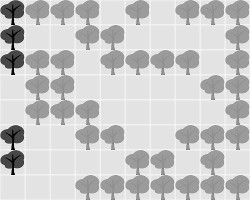
Options Summer 2020: How can system analysts engage in, or even co-design and implement, processes that provide inclusive, effective, and informed policy guidance? IIASA researchers are at the forefront of addressing this question.
Engaging actors across governments, businesses, civil society organizations, and the public has become essential to informing the complex policy issues decision makers are faced with today. To this end, IIASA researchers are applying system concepts such as citizen science, smart games, role-playing, and policy exercises to support research and to aid stakeholders in co-designing and co-generating policy options that recognize the unique perspectives and knowledge of others, thus leveling the policy field so that stakeholders become partners in developing solutions.
"A benefit of these approaches is that the whole social learning process is really enhanced. Rather than researchers sitting behind their desks and trying to unravel a problem, we can interact with others and initiate a process of bidirectional learning, in other words, we learn what is relevant to the people affected by a particular problem or situation, while they can also understand how we see things. It’s really all about encouraging interaction and building trust to ultimately arrive at better decisions," says Piotr Magnuszewski, an IIASA researcher who has experimented with innovative co-design methods and applications.
A role-playing exercise developed at IIASA to manage flood risk in a municipality plagued by stakeholder conflicts and implementation stalemates, serves as a good example of the value of including the views of multiple stakeholder groups in decision-making processes. In this instance, the stakeholder participants dealt with simulated tasks on climate risk management at the municipal level by putting themselves in the shoes of their counterparts on the other side of the negotiations. By seeing the problems through the eyes of others, the participants were better able to co-generate compromise measures to deal with the escalating flood risk, and importantly, identify the 'problem owners' or the responsible institutions and persons that could help overcome the implementation gap.
 © The Forest Game
© The Forest Game
In another study, the authors for the first time combined a gaming approach with cultural theory to shed light on the mechanisms that govern human-environment interactions when it comes to the sustainable use of common resources. The researchers designed a forestharvesting game to see how awareness of additional risks affects the sustainable management of a resource. The objective was for participants to harvest trees to generate income, while the forest also served as protection against floods, meaning that if rainfall intensity exceeded the size of the remaining forest, players would be subject to flood damage, thus reducing their payoffs. The findings highlighted the influence of shared benefits, communication, and individual worldviews on the outcome of players’ decisions.
A variety of participatory approaches were also used as part of a project aimed at implementing measures towards regional energy transitions in Austria.
“This project’s objectives included understanding diverse stakeholder motivations, clarifying strategic stakeholder interactions and institutional framework settings that contribute to policy implementation gaps, and identifying policy options that would enable and motivate stakeholders to take action,” explains IIASA researcher Jenan Irshaid.
The team used a combination of in-depth stakeholder interviews, policy exercises, a gametheoretic model, and design-thinking workshops to encourage innovative ideas on how to overcome the associated challenges. The process enabled the participants to successfully identify key problems and possible pathways to problem solutions. Interestingly, the study also revealed that where decision makers were not actively involved, the implementation of innovative solutions did not lead to immediate action due to a lack of implementation capacities and political support.
In addition to the above, games and social networking are also being used to build a citizen scientists network that provides valuable data for expert-generated models and analyses. A large number of people have, for instance, participated in the IIASA game, Cropland Capture, validating more than 2.5 million km2 of land cover data – an area half the size of the EU. Several other applications are also enlisting the help of citizens and other stakeholders to, among others, map deforestation, identify damaged buildings, and collect land-cover and land-use data across Europe.
Apart from those discussed above, a range of other participatory methods and tools to determine stakeholder preferences and aid robust evaluation in complex and uncertain multi-stakeholder policy contexts, such as multi-criteria decision analysis, qualitative systems mapping, and participatory scenario planning, have been successfully used in IIASA projects all over the world. Examples include the analyses of energy policy in the Middle East North African Sustainable Electricity Trajectories (MENA Select) Project; and the strategic planning of water resources and water infrastructure in Eastern Europe as part of a project undertaken by IIASA and the Organisation for Economic Co-operation and Development (OECD).
Researchers at IIASA have embraced citizen science and co-design, not only as an integral part of many research projects, but also as a creative input into advisory processes. According to IIASA researcher Leena Ilmola-Sheppard, the trust built between the institute and policymakers over the years is key to continued successful collaboration in terms of informing the decisions that will affect all of us into the future.
She says, “When policymakers are faced with a complex challenge, traditional research tools are often insufficient to serve their needs. IIASA researchers have developed close ties to decision makers at all levels and have advised them on a myriad of problems using participatory approaches.
Continuous dialogue is however extremely important in this regard, especially in terms of reaching decision makers at higher levels of government, to enable informed decision making that draws on knowledge from different stakeholders.”
By Ansa Heyl



